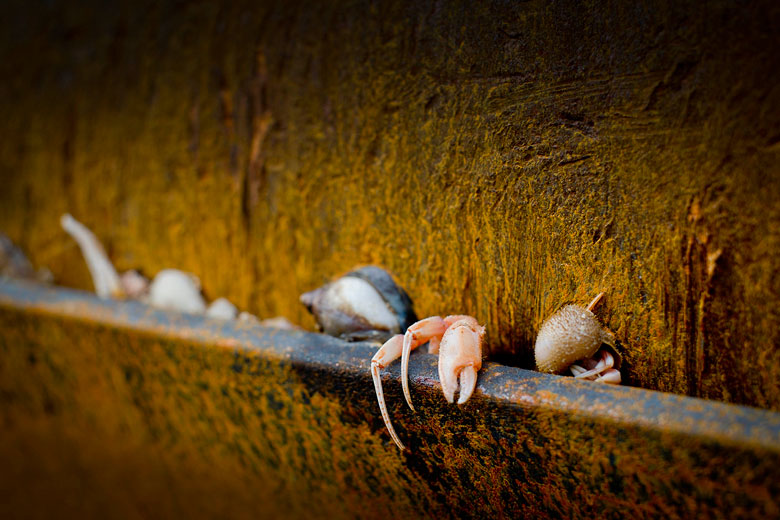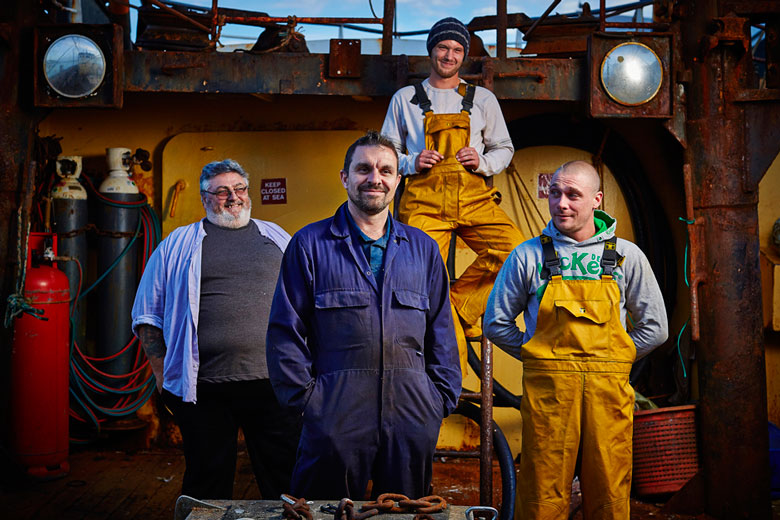What it takes
Mike Warner meets Skipper Andrew “Drew” Macleod from Channel 4’s The Catch, to find out more about what he does and what it takes to keep afloat.
As those of you who, like me, are avid viewers of The Catch, will know, Andrew “Drew” Macleod is the owner/skipper of the Van Dijck (BM362). A no-frills workhorse of a boat, the Van Dijck is one of several Brixham scallop dredgers, catching its quarry by raking the seabed with relatively small, but effective, beam-towed chain nets.
Although there are environmental concerns about this practice due to the damage it causes to the seabed, skippers like Drew take care to avoid sensitive marine areas and keep away from grounds that may suffer from overfishing. (Indeed, they have to: failure to do so can result in a heavy fine.) Moreover, the dredges are spring-loaded, allowing them to bounce over obstructions, minimising damage to the seabed – and to the expensive gear. While hand-dived scallops are more environmentally friendly, they are inevitably more expensive and by far the majority of scallops sold in the UK are dredged. One such fishery – in Shetland – has even been certified as sustainable by the MSC since 2012, as we’ve written about before.
The Catch’s coverage of the Van Dijck and its crew really brings home the harshness of the working environment that is the daily routine for boats along the south west coast. I also got the sense that fishing restrictions were key to the viability of the fishery and so I asked Drew how he was able to operate successfully within the strict parameters set by the Marine Management Organisation (MMO).
“There is no ‘quota’ for scallops, but the Western Water fleet is restricted to the numbers of ‘days at sea’ it can fish, as laid down by the EU Common Fisheries Policy (CFP),” says Drew. He explains that this number is calculated based not on the size of the fleet, but on its total engine power (in kilowatts). In other words, the more powerful boats get, the less time at sea they are allocated. Across the UK, both the number of vessels and total power has declined by about the same amount – about a quarter – over the last 20 years, due to reduced fishing opportunities, decommissioning exercises and so forth.
The days at sea allocation varies from one measurement period to another according to other variables, notably stock assessment. From 1 July to 30 September, it’s 55 days – roughly 60% of the available time. Skippers have to report when they fish and relay this data to the MMO, so that it can monitor the uptake of allocated “effort” (an official term that essentially refers to the amount of fishing).
“This year, the number of days we’ve been allowed to fish hasn’t been too bad. And then it comes down to weather and all the other associated factors that combine to test us,” says Drew. “Last year’s severe storms took away more scallop ground virtually overnight than the combined fishing effort could ever achieve. Rich scallop beds were suddenly covered in silt and debris; where previously we had been catching plenty, suddenly there were none.”
It’s not just the hardships at sea depicted so graphically on The Catch that fishermen have to deal with; it’s the challenges of working with clearly necessary, but strict rules while balancing the books to ensure bills are settled and crew paid. We’re certainly keeping our fingers crossed that there is better luck to come for Drew and the Van Dijck than in their last appearance on The Catch: if you missed it, you can still watch again here. Though not for everyone (not least for the amount of swearing!), it’s thrilling, fascinating viewing. Roll on the next episode.
The Catch is on Channel 4 on Monday nights, 9pm.








